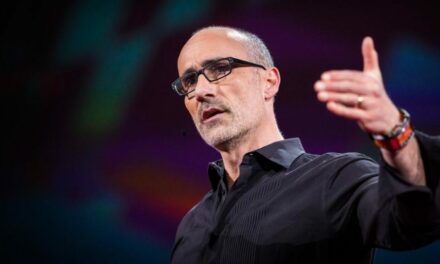The American-German co-production "The West is the Same" was nominated for nine Oscars. It is competing for the Oscar in the categories of best foreign and American film, visual effects, sound and soundtrack, best cinematography, mask and visuals, as well as – screenplay different from the original story – and it will soon become clear how many trophies will be collected at this year's Hollywood gala.
I think that few people in the European cultural circle need an explanation for the story, which is the wail of the turn-of-the-century generation that perished in the hell of the First World War, the presentation of the senselessness of war. Walking in military cemeteries, I am always moved by the sight of the headstones, the year of birth of the fallen on the headstones. Most of them are young boys aged 18-22 resting in military order under the hants that stretch into the endless distance.
The author of the novel, which was published in 1928, also went through the bumps of the Western Front, and his friends, classmates, and fellow soldiers died in rows around him. Hearing the inspiring words, the young people voluntarily marched to the human slaughterhouse, as they were made to believe that they were fighting for a good cause, for the glory of their country. The novel's hero is the writer himself, who, according to the story, fell in October 1918, "slumped forward and lay on the ground as if asleep." In reality, he survived the infernal mill and felt it his duty to speak out against war, all kinds of war, senseless bloodshed.
The novel was translated into twenty-six languages in one year, and by 1930, one million copies had been sold in Germany alone. Hollywood immediately bought the rights to make it into a movie, and the film was a huge success worldwide. Except Germany. There, the film was banned and the resurgent Nazi propaganda launched its smear campaign against Erich Maria Remarque (1898–1970). They claimed that he was lying, that he was not even a soldier, that he had never been to the front, that he was nothing more than a hostile French Jew. Although Remarque was a real German born in Osnabrück, his original name was Remark. According to the anti-Semitic Nazis, this name is Kramer when read backwards, so you can see what milieu the writer came from. In 1933, on the day of the great book burning in May, Remarque's novel was also burned at the stake in Berlin and other German cities. The German youth, university students and students helped in the destruction of European culture, they helped to cleanse the German language and literature of "politically unpopular writers" according to the Nazi idea.
In connection with the war in Ukraine, many analysts have recently been referring to the First World War. At that time, the same standing war was going on on the Western Front as it is today in Ukraine. The front barely moved forward, if they did, they retreated within a short time, dug themselves into the trenches on both sides, attacked, killed and destroyed from there. More desperate than brave. Sometimes they tried to break through, with little success. The financial loss did not matter, it was replaced as long as the German economy could take it, and the losses of the French were offset by their allies. Human life didn't matter either, if nothing else, the chemical weapons of the time, the poisonous gases, were used, people fell by the thousands, on both sides.
Abnutzungskrieg - the German said then and still says about the war in Ukraine - i.e. a protracted military conflict in which mutual losses exceed potential or actual gains. After four years, the front lines stood in the same place as at the beginning of the war. There was bleeding, in every way. The opposing parties believed that the other would run out and did not want to realize that they were destroying themselves.
The autumn leaves fell five times before Germany finally capitulated in that particular railway car. "We had forty thousand dead last week, Germany will soon be empty, it's over! For God's sake, let's make peace!" – the politicians begged the military leadership living from the war. (Today it is all the other way around, the generals try in vain to convince the incompetent politicians for a living.)
In the Great War, ten million soldiers lost their lives and twenty million were wounded. The number of civilian victims is estimated at an additional seven million. At the end of the war, 25 states were at war with about 1.4 billion people, which was about three quarters of the Earth's population at the time.
With good business sense, Netflix bought the rights to film in 2021 and made a real Netflix movie out of the cathartic story. With emotional impact, they show the ruthlessness of war, mud, filth and murder in its brutality in bloody melees. We see the horror, but hardly the sufferings of the soul, the human depths. The action film meant to serve the perceived needs of today's viewers suddenly became very relevant. By the time the film was released in September 2022, the Russian-Ukrainian slaughter was already in full swing. Virtual horror has become reality.
Rereading the novel, I am trying to decipher why this anti-war opus was to be persecuted even before Hitler came to power. Because it shows the true face of war? The horror of the front, the senseless and incomprehensible power interests, which can sacrifice anything, people, countries, peoples along the lines of self-made ideologies? Because it warns that this is what war really is, people, be careful not to get caught up in it! "For a long time I thought that people liked to live in peace and were against war," said Remarque. – Then I realized that there are also people who love war. They are the ones who never have to fight and therefore do not know the true nature of war.”
I would make not only the film, but also the thought-provoking book, which affects the emotions much more, mandatory for the politicians and their followers who support the war. To learn the true nature of war. Because apparently they don't know what they're risking.
Civilians Info: The official trailer is also shocking! Here it is:
Source: Magyar Hírlap
Featured image: Netflix













